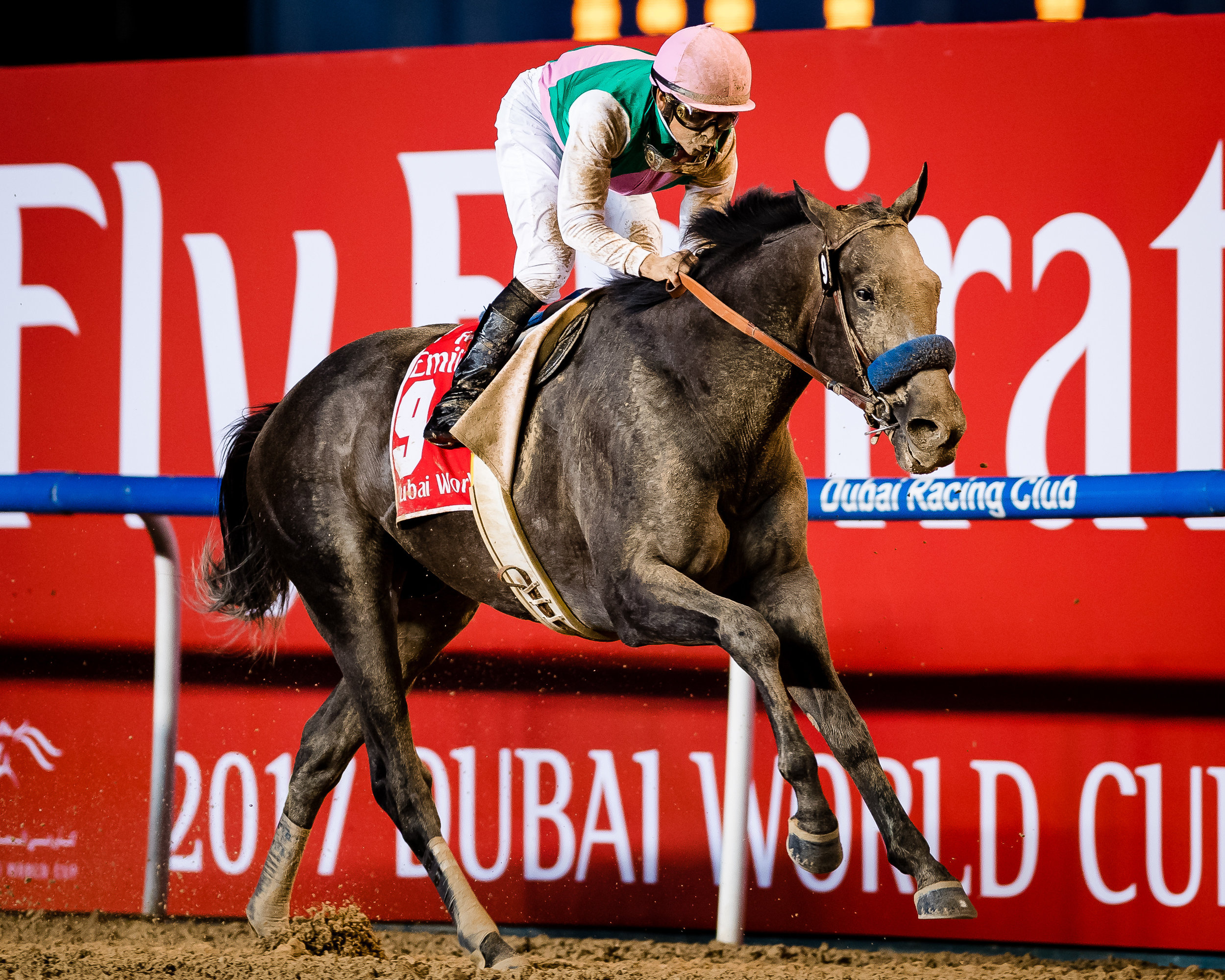Trainer of the Quarter - Jason Servis
/By Bill Heller
The start of a new year did nothing to slow the momentum of 60-year-old trainer Jason Servis. He headed into February just 20 wins shy of a 1,000th career victory thanks to a sensational 2017 campaign, when he posted career highs in earnings, victories, and starts. And his legitimate Kentucky Derby contender, Firenze Fire, already has a step up on his rivals, having captured his three-year-old debut.
Though he may lack a national presence, Servis has a phenomenal career win percentage of 23.3, with 9,800 victories in 4,211 starts.
“Life is great, I was telling myself when I was out on my stable pony the other morning,” Servis said on February 1st. “I had my son (Garrett, 29) with me. I said, ‘I can’t believe I’m getting paid to do this.’”
At the start of his lifetime with horses, he wasn’t getting paid much. And he didn’t even mind. “My dad ended up a steward at Charles Town. That’s where I cut my teeth. No money. But they were the good old days. My dad made me. I learned the straight and narrow. Work hard. Keep your nose clean.”
It’s not only worked for Jason, but also for his younger brother John, who guided Smarty Jones to a career that came up one length short of winning the 2004 Triple Crown.
Servis started out as a jockey before he conceded to his size and weight. Next, he worked as an exercise rider and assistant trainer for Peter Fortay in the mornings and in the jockeys’ room in the afternoons at Monmouth Park.
In his first year as a trainer, he saddled just one horse. “I didn’t start training until I was 43,” he said. “I had seen a lot. It was a very good education for me.”
In his first full year of training in 2002, he won 14 races from 71 starts, just under 20 percent.
Two years later, his brother John had the horse of a lifetime in Smarty Jones, whose victories in the Kentucky Derby and Preakness Stakes left him eight-for-eight. “I’ll never forget, I was just sitting at the kitchen table by myself at a quarter to five the day after the Derby,” Jason said. “And I’m looking at these roses my wife had taken. I can’t believe my brother won the Kentucky Derby. We were on the track our whole lives.”
On the day after Smarty Jones won the Preakness, John, Jason, and their father were at Pimlico. “John did ‘Good Morning America’ and other interviews,” Jason said. “We were in such a fog from the race. It was overwhelming. We were kind of dazed. We couldn’t get the car started.”
There was a good reason. They were in the wrong car.
Talking about Smarty Jones’ second by a length in the Belmont Stakes is still painful for Jason Servis. You can hear it in his voice. “Gosh, I was really sad for my brother,” he said. “It was like someone beat him up.”
Maybe he can avenge that loss on behalf of his brother. Firenze Fire is now the winner of four-of-six starts, including the Grade 1 Champagne and Grade 3 Sanford Stakes, and the Poseidon’s Warrior colt started 2018 off right with a win in the Jerome Stakes at Aqueduct.
In 2017, Servis won 112 races and $4.9 million – 23rd in the country – from 391 starts, and it proved to be his most successful season to date, with Mr. Amore Stable’s Firenze Fire providing him with his first Grade 1, and Gary and Mary West’s Actress winning two graded stakes races.
He split his 50-horse stable at Belmont Park in New York and Payson Park in Florida this winter. “I could have more horses,” he said, but I think maybe less is worth more. I like to keep my hands on my horses.”
His philosophy is simple. “I developed a program from galloping horses,” he said. “Keep your horses happy. Once they’re fit, stay out of their way.”
BUY THIS ISSUE IN PRINT OR DOWNLOAD -
Spring 2018, issue 47 (PRINT)
$6.95
Spring 2018, issue 47 (DOWNLOAD)
$3.99
WHY NOT SUBSCRIBE?
DON'T MISS OUT AND SUBSCRIBE TO RECEIVE THE NEXT FOUR ISSUES!
Print & Online Subscription
$24.95








